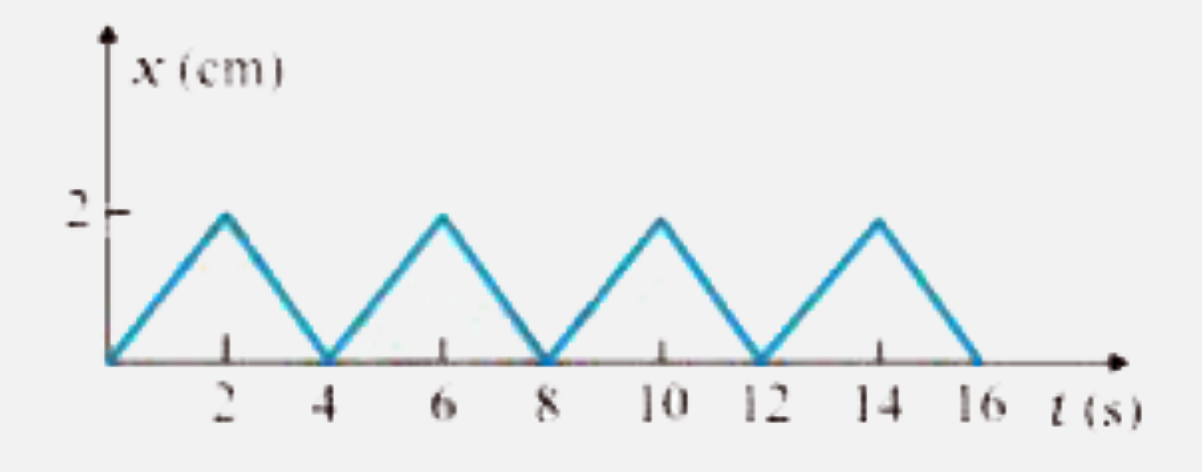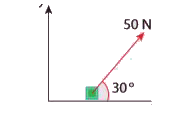The motion of a particle of mass m is described by y=ut+12gt2 . Find the force acting on the particale . Solution in Tamil
We know
y=ut+12gt2
v=dydt=u+gt
a=dvdt=g
Then the force is given by eq.
F = ma = mg
Thus the given equation describes the motion of a particle under acceleration due to gravity and y is the position coordinate in the direction of g.
Topper's Solved these Questions
- LAW OF MOTIONBOOK - NCERT TAMILCHAPTER - LAW OF MOTIONEXERCISE - EXERCISE
23 Videos
- LAW OF MOTIONBOOK - NCERT TAMILCHAPTER - LAW OF MOTIONEXERCISE - EXERCISE (ADDITIONAL EXERCISE)
17 Videos
- KINETIC THEORY OF GASESBOOK - NCERT TAMILCHAPTER - KINETIC THEORY OF GASESEXERCISE - EVALUATION (Numerical Problems)
8 Videos
- LAWS OF MOTIONBOOK - NCERT TAMILCHAPTER - LAWS OF MOTIONEXERCISE - EXERCISE (V. Numerical Problems)
14 Videos
Similar Questions
Give the magnitude and direction of the net force acting on
(a) a drop of rain falling down with a constant speed
(b) a crok of mass 10 g floating on water
(c) a kite skilfully held stationary in the sky
(d) a car moving with a constant velocity of 30kh/h on a rough road
(e) a high speed electron in space free from all gravitational objects and free of electric and magnetic fields.
View SolutionFigure shows the position-time graph of a body of mass 0.04 kg. Suggest a suitable physical context for this motion. What is the time between two consecutive impulses received by the body ? What is the magnitude of each impulse ?

View SolutionA fresh air is composed of nitrogen N2(78%) and oxygen O2(21%). Find the rms speed of N2 and O2 at 20∘C.
View SolutionA force of 50N act on the object of mass 20 kg. shown in the figure. Calculate the acceleration of the object in x and y directions

View SolutionThe motion of a particle of mass m is described by y =ut + (1)/(2) g t^(2) . Find the force acting on the particale .
View Solutionm द्रव्यमान के एक कण की गति का समीकरण है-
x=ut+12gt2
कण पर कार्यरत बल का मान ज्ञात कीजिए।
View SolutionThe motion of a particle of mass m is described by h= ut+1//2 gt^2. Find the force acting on particle. (F=mg).
View SolutionThe motion of a particle of mass m is described by h= ut + 1//2 "gt"^2 . Find the force acting on particle.
View Solutionद्रव्यमान m के एक कण की गति, y=ut+12gt2 से वर्णित है। उस कण पर लगने वाले बल को ज्ञात करो।
View SolutionThe motion of a particle of mass m is described by y=ut+12gt2 . Find the force acting on the particle.
View SolutionThe motion of a particle of mass m is described by y = ut + 1/2 "gt"^2 . Find the force acting on the particle.
View SolutionThe motion of a particle of mass m is described by y=ut+12gt2 . Find the force acting on the particle.
View SolutionThe motion of a particle of mass m is described by y=ut+12gt2 . Find the force acting on the particle.
View SolutionThe motion of a particle of mass m is described by y =ut + (1)/(2) g t^(2) . Find the force acting on the particale .
View Solution(x, t), (y, t) diagram of a particle moving in 2-dimensions If the particle has a mass of 500 g, find the force (direction and magnitude) acting on the particle.
View SolutionThe motion of a particle of mass m is described by y=ut+12gt2 . Find the force acting on the particale .
View Solution
